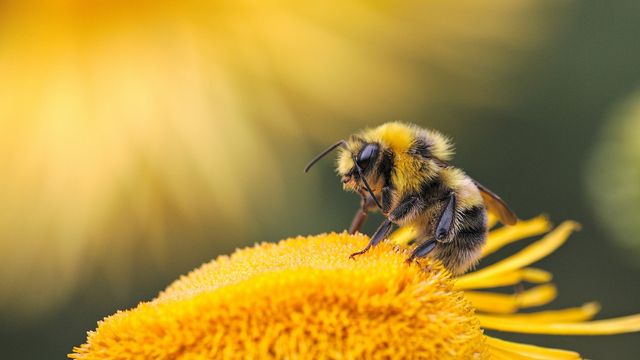
Despite sharing identical genetic blueprints, female honey bee larvae face vastly different destinies: they can evolve into either long-lived reproductive queens or short-lived sterile workers. A groundbreaking study led by researchers at Penn State has unveiled the molecular mechanisms dictating this divergence, highlighting the genetic interplay between maternal and paternal genes. The findings were published this week in Genome Biology.
“Imagine if your mother’s genes and your father’s genes were in constant disagreement about how you should develop — that is essentially what genomic imprinting is, and we see that it happens across the tree of life: from honey bees to humans,” explained Sean Bresnahan, the study’s lead author. Bresnahan conducted this research as a doctoral candidate at Penn State, supported by a U.S. National Science Foundation Graduate Research Fellowship. He is now a data scientist at the University of Texas MD Anderson Cancer Center. “We found that this genetic ‘argument’ can be detected during a critical developmental window where a honey bee larva becomes either a queen or a worker.”
Unraveling the Genetic Conflict
The critical window for determining a bee’s fate closes 192 hours after the egg is laid. To explore this genetic conflict, the research team, including co-author Kate Anton, utilized instrumental insemination to create specific genetic crosses between selected queens and drones. This allowed them to distinguish between patrigenes — genes inherited from the father — and matrigenes — genes inherited from the mother. The team analyzed the larvae’s RNA to identify differently expressed genes and sequenced the parents’ genomes to trace parent-of-origin gene expression.
“We found patrigenes were expressed at higher levels in queen-destined larvae, and matrigenes were expressed at higher levels in worker-destined larvae,” Bresnahan noted. This discovery led the researchers to examine cellular pathways to see if these genes were functioning within the same biological processes. The results were striking: if a matrigene had increased expression, a patrigene would have decreased expression in the same pathway, indicating a genetic tug-of-war.
Beyond DNA Methylation: Histone Modifications
Initially, the team considered DNA methylation as the mechanism behind these gene expression patterns. However, their previous work showed that DNA methylation does not serve this function in honey bees. Instead, they turned their attention to histone modifications. DNA is wrapped around histone proteins, forming a structure called chromatin, which condenses into chromosomes during cellular reproduction. The researchers hypothesized that chemical tags on histone proteins could influence gene accessibility and expression.
Using a method developed by co-author Shaun Mahony, the team isolated DNA bound to histone proteins to determine which genes were involved and whether they were expressed or inhibited. “We found that, in honey bees, parent-of-origin expression is regulated by histone modifications,” Bresnahan said, emphasizing that this mechanism is more common across the tree of life than previously thought.
“What we’re seeing in honey bees isn’t actually that unusual when you take a step back — histone-based mechanisms for parent-of-origin effects are more widely utilized across the tree of life than DNA methylation-based systems,” Bresnahan said.
Implications for Bee Breeding and Beyond
This understanding could revolutionize the selective breeding of honey bees, potentially leading to more productive and resilient colonies. Christina Grozinger, a co-author and director of the Huck Institutes of the Life Sciences, expressed interest in exploring how intragenomic conflict influences traits such as the nurturing behavior of nurse bees.
Bresnahan’s work extends beyond honey bees. In his current role, he applies the skills learned from this project to study maternal-child health, focusing on how genetic conflicts shape complex traits and social systems in humans. “The skills I developed studying parent-of-origin effects translate directly to my current studies of maternal-child health mediated through the placenta,” he said.
The research not only sheds light on the complex genetic dynamics within honey bees but also offers insights into broader biological processes. As scientists continue to unravel these genetic mysteries, the potential applications in agriculture and medicine are vast.
Reference: Bresnahan ST, Mahony S, Anton K, Harpur B, Grozinger CM. Intragenomic conflict associated with extreme phenotypic plasticity in queen-worker caste determination in honey bees (Apis mellifera). Genome Biol. 2025;26(1):171. doi: 10.1186/s13059-025-03628-0







